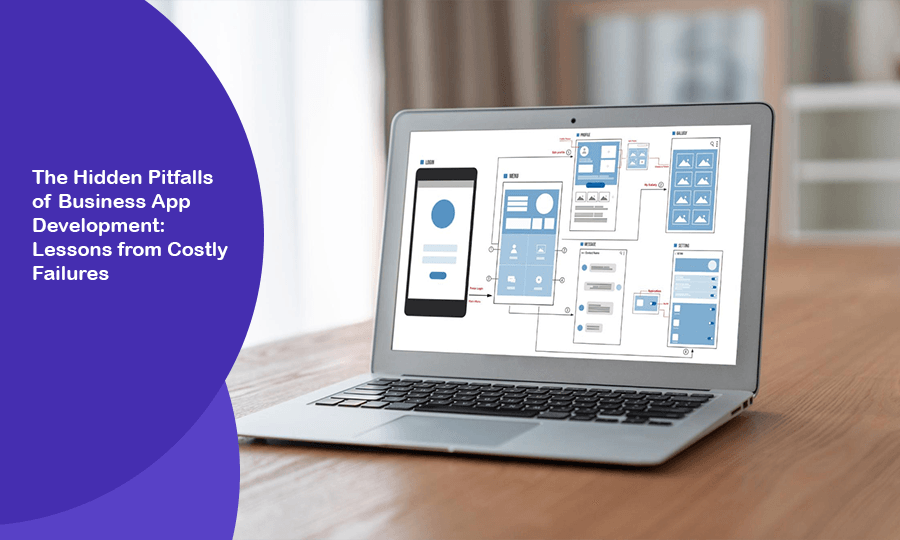Picture this: you’ve sunk millions into a cutting-edge business app, dreaming it’ll revolutionize your company’s operations. Months later, you’re drowning in delays, budget overruns, and a glitchy mess that’s nowhere near launch-ready. What went wrong? In the high-stakes arena of business app development, even tiny missteps can spiral into disasters that cost you months — or more. This article dives deep into the most treacherous pitfalls that can sabotage your project, spiced up with real-world flops and packed with tips to keep your app on track.
Business apps aren’t just nice-to-haves anymore — they’re the backbone of modern enterprises, driving everything from operational efficiency to customer loyalty. But their complexity, paired with tight deadlines and sky-high expectations, turns them into a minefield of potential mistakes. Whether you’re a developer, project manager, or exec, knowing these traps is your first step to dodging them. Let’s unpack the top 10 culprits that can grind your project to a halt.
The Top 10 Mistakes That Can Derail Your Business App Development
1. Unclear Requirements: Building on Quicksand
If you don’t nail down exactly what your app needs to do, you’re asking for trouble. Teams end up coding the wrong features, only to rip them out later when stakeholders cry, “That’s not what we meant!” Picture an inventory app that’s half-built before someone mentions it should also handle payroll — cue weeks of backtracking.
Fix It: Lock in requirements upfront with stakeholder workshops, user stories, and mockups. Clarity now saves chaos later.
2. Poor Project Management: Chaos Unleashed
Bad communication, pie-in-the-sky timelines, and team misalignment are a recipe for missed deadlines and runaway scope. The Project Management Institute pegs 37% of project failures to sloppy management. In sprawling enterprise projects, that’s a death knell.
Fix It: Go agile — think Scrum or Kanban — and lean on tools like Jira to keep everyone synced.
3. Insufficient Testing: Rolling the Dice
Cutting corners on testing is like handing users a ticking bug bomb. Late-discovered flaws mean massive fixes, pushing launch dates into next year. Remember CareFusion’s 2015 medical software debacle? Skimpy testing led to recalls and a PR nightmare.
Fix It: Test early, test often — automated scripts and multi-device checks are your friends.
4. Ignoring Scalability: A Future Headache
Build an app that can’t grow with your business, and you’re in for a world of hurt. Traffic spikes reveal bottlenecks, forcing a ground-up rebuild. Enterprise apps juggling big data can’t afford this oversight.
Fix It: Design with scale in mind — cloud platforms like AWS or Azure make it easier.
5. Security Oversights: Open Doors for Trouble
Skimp on security, and you’re begging for breaches that demand urgent, time-sucking patches. A major retailer in 2023 delayed their app launch six months after a gaping flaw surfaced post-coding.
Fix It: Bake security into the blueprint — think encryption and regular audits from day one.

6. Team Troubles: The People Problem
Green developers or constant turnover can stall progress. Newbies wrestle with enterprise quirks, while departing vets take know-how with them. It’s a slow-motion train wreck.
Fix It: Hire seasoned pros and keep docs tight so newbies aren’t starting from scratch.
7. Underestimating Complexity: The Silent Saboteur
Think enterprise apps are a breeze? Think again. Legacy system tie-ins and hidden quirks can blow timelines to smithereens if you don’t plan for them.
Fix It: Map out every integration and pad your schedule — better safe than sorry.
8. Wrong Tech Stack: A $250 Million Lesson
Picking untested or mismatched tech can sink you. The Australian Securities Exchange (ASX) learned this the hard way, torching $250 million on a blockchain-based CHESS system that flopped after seven years.
Fix It: Stick to proven stacks — research compatibility and support before you commit.
9. No User Input: Guessing in the Dark
Skip end-user feedback, and you’ll deliver an app nobody wants, triggering rounds of rework. Users aren’t shy about rejecting clunky tools.
Fix It: Bring users into the loop — design reviews, beta tests, the works.
10. Feature Overload: The Everything Trap
Stuffing your app with every bell and whistle bogs down coding, confuses users, and delays launch. Perfectionism here is the enemy of progress.
Fix It: Start with an MVP — nail the core, then add extras later.
Real-World Flops: Where It All Went Wrong
These mistakes aren’t theoretical — they’ve tanked real projects with jaw-dropping consequences. Here’s the dirt on two epic fails.
ASX CHESS Project: The Blockchain Bust
The ASX set out to replace its aging CHESS system with a shiny blockchain solution. Seven years and $250 million later? Nada. Poor management, skimpy testing, and betting on unproven tech killed it dead by 2022. Moral of the story: flashy doesn’t mean foolproof.
Birmingham City Council’s Oracle ERP Mess
Birmingham City Council aimed to upgrade its financial and HR systems with Oracle ERP. Instead, they got delays, chaos, and a bankruptcy filing in 2023. Underestimating complexity, ignoring stakeholders, and botched planning turned a modernization dream into a fiscal nightmare.
These disasters scream one truth: screw up the basics, and the fallout is brutal.
Sidestepping the Traps: Your Cheat Sheet
Here’s how to outsmart these pitfalls and keep your project humming:
- Nail Requirements: Workshops, prototypes — get everyone aligned early.
- Master Project Management: Agile plus tools like Trello or Asana keeps chaos at bay.
- Test Relentlessly: Automated suites and real-device runs catch issues fast.
- Plan for Scale: Cloud-first designs handle growth without breaking a sweat.
- Lock Down Security: Start secure — penetration tests aren’t optional.
- Build a Rockstar Team: Experience matters; good docs bridge turnover gaps.
- Respect Complexity: Assess systems thoroughly and buffer your timeline.
- Pick Smart Tech: Proven tools over trendy gambles every time.
- Loop in Users: Feedback at every stage avoids costly do-overs.
- Keep It Lean: Launch an MVP, then iterate — don’t overstuff it.
Wrapping Up: From Pitfalls to Wins
Business app development is a tightrope walk — exhilarating when it works, punishing when it doesn’t. Mistakes like fuzzy goals, sloppy oversight, or testing shortcuts can bleed months and millions. But armed with lessons from epic flops and a solid game plan, you can flip the script.
Dodge these traps, and your app won’t just survive — it’ll thrive, powering your business forward instead of holding it back.
So, what’s your next move?
Relevant Articles:








































